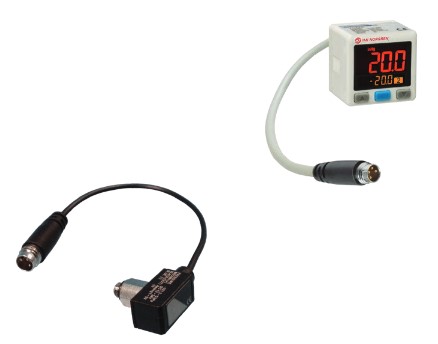Norgren Sensors
Modern sensors like Norgren Sensors are painstakingly designed to keep an eye on and regulate a variety of factors in hydraulic and pneumatic systems. Reputably supported by Norgren's engineering know-how, these sensors play a critical role in improving industrial processes' effectiveness, security, and caliber.
Types of Norgren Sensors and how they work
According to particular principles that are in line with the kind of sensing involved, Sensors function. While the precise technique may change based on the application and type of sensor:
Pressure Sensors
These norgren pressure sensor keep an eye on the liquid or gas pressure inside a system. Pressure variations cause a pressure-sensitive element to distort. Resistance or capacitance are two examples of electrical properties that change in tandem with deformation. The pressure level is then ascertained by measuring and interpreting the electrical signal that is produced as a result of this shift.
Temperature Sensors
Sensors intended to identify changes in a system's temperature. Thermocouples and thermistors are frequently used with Norgren Temperature Sensors. When the temperature varies, these components display variations in voltage or electrical resistance. Temperature in the monitored environment is determined by measuring the ensuing electrical signal.
Flow Sensors
Centered on determining how quickly fluid moves through a system. Differential pressure and heat dispersion are two examples of the technologies that Norgren Flow Sensors may use. Thermal dispersion flow sensors, for instance, gauge the velocity of a fluid flowing by measuring its heat transfer properties. Real-time information on fluid movement is provided by the sensors, which provide electrical impulses proportionate to the flow rate.
Proximity Sensors
Without making physical contact, these sensors identify whether an object is present or absent. Infrared and ultrasonic technologies are frequently used by Norgren Proximity Sensors. Ultrasonic sensors use sound waves, while infrared sensors produce beams and monitor changes in reflected patterns. The sensor sends out a signal to indicate the presence of an object when it gets close.
A range of sensor types are available from Norgren to meet various industrial requirements. The particular technology used is determined by the application's requirements. sensors are essential for supplying real-time data for automation, safety, and process control in a variety of sectors because of their precise and dependable operation.
Applications Norgren Sensors
One notable aspect of Sensors is their adaptability. Designed to be integrated into a variety of industries, they are used in:
- Process Control: sensors enable accurate control over flow rates, temperature, and pressure, guaranteeing peak system efficiency.
- Safety Management: These sensors play a vital role in safety standards by promptly identifying anomalies and initiating prompt actions to avert malfunctions or mishaps.
- Efficiency Enhancement: Efficiency is mostly dependent on automation, and Norgren Sensor offer real-time data for dynamic modifications that result in reduced energy use and simpler procedures.
Choosing the right Sensors is essential to a well-coordinated operation. In order to keep industrial processes under optimal control and efficiency, these precision equipment are essential.
Our team of expert managers is here to help if you have any questions about the features or uses of Norgren Sensor. We recognize how critical it is to select the ideal sensor for your particular requirements and to offer knowledgeable advice.
